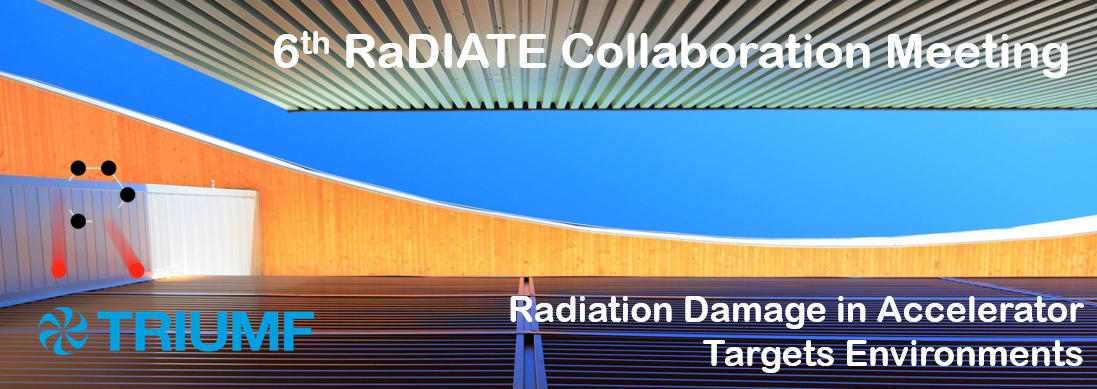Speaker
Taku Ishida
(J-PARC)
Description
Titanium alloys are widely utilized as structural materials for aerospace/submarine applications etc., because of their high strength-to-weight ratio, good fatigue property, and good corrosion/erosion resistance, even at elevated temperatures. It also satisfies low-activation requirement as nuclear power materials. If the radiation-damage tolerance is improved, titanium alloys have potential as a structural material for fusion reactor needs, especially for high-temperature components, where iron-based materials have difficulties. Under the aegis of the RaDIATE collaboration, Radiation Damage In Accelerator Target Environments, a high-intensity proton beam exposure with 181 MeV energy was conducted at Brookhaven Linac Isotope Producer facility on various material specimens for accelerator target and beam window applications. They include titanium alloys as future target and beam window materials in US and Japan high-intensity proton accelerator facilities (LBNF and J-PARC) aiming at next generation long-baseline neutrino oscillation experiments. The radiation damage level of two titanium capsules reached 0.25 and 0.96 dpa-NRT, respectively, at an irradiation temperature around 120 degree C. Compared to low-energy neutron irradiation, high-energy proton irradiation gives a higher order of hydrogen and helium nucleation, thus can be referred to as high-irradiation regime for the fusion condition.
Tensile tests of the low-dose capsule specimens showed increased hardness and a large decrease in ductility for the dual-phase Ti-6Al-4V Grade-5 and Gr23 extra low interstitial alloys, with the Gr9 Ti-3Al-2.5V still exhibiting uniform elongation of a few % after irradiation. TEM analyses on Ti-6Al-4V indicates clear evidence of a high-density of dislocation loops (<2 nm) in each alpha-phase grain. The beta phase did not contain any visible defects such as loops or black dots, but the diffraction patterns indicated omega phase in an advanced formation stage. The radiation-induced omega-phase production in the beta phase could lead to greater loss of ductility in Ti-6Al-4V alloys in comparison with Ti-3Al-2.5V with less beta-phase. We will continue systematically studying existing titanium alloys in the high dose capsule, including metastable beta phase alloy and other radiation-tolerant candidate grades.
Primary author
Taku Ishida
(J-PARC)
Co-authors
Dr
Andy Casella
(PNNL)
Dr
David Senor
(Pacific Northwest National Laboratory)
Dr
Eiichi Wakai
(J-PARC, Japan Atomic Energy Agency)
Dr
Kavin Ammigan
(Fermilab)
Mr
Patrick Hurh
(Fermi National Accelerator Laboratory)
Mr
Shunsuke Makimura
(KEK, J-PARC)

